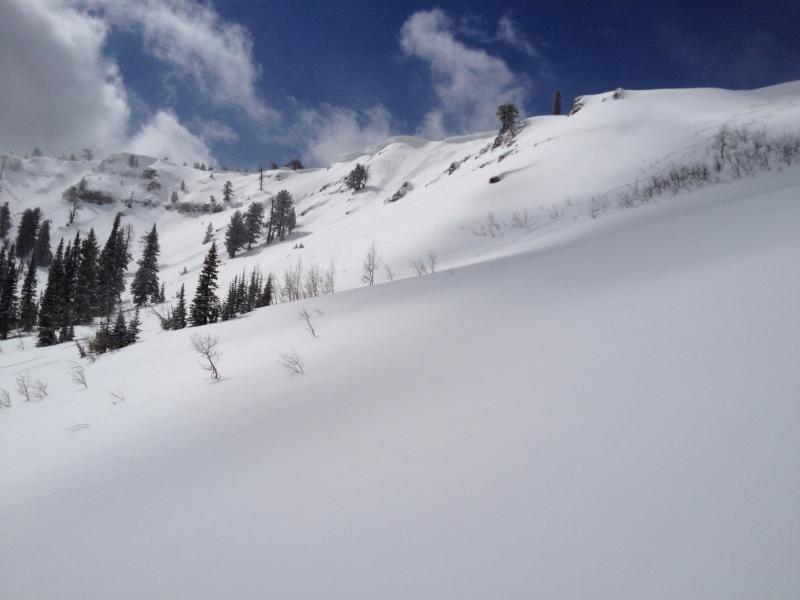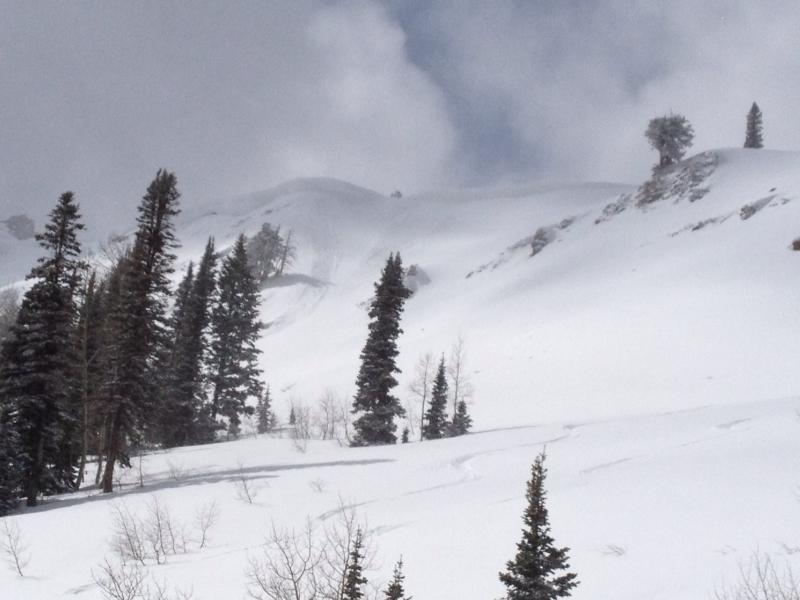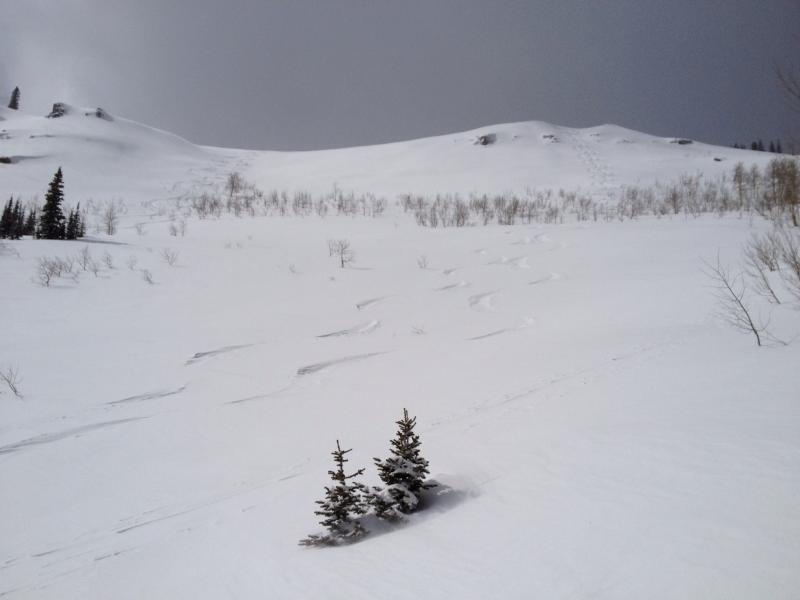The East facing terrain had a consistent 8 inch blanket of moderately dense creamy new snow. A group of local celebrities showed the way up Providence Canyon to the Bear River Crest where we dropped into White Rock Hollow. We made three laps on slopes ranging from SE, E, and NE into this upper drainage. The West and NW facing upper elevation terrain had areas of wind scour intermixed with denser (but ridable) wind blown. Of note, even though there were brief periods of sunshine, and threats of greenhousing, the snow on all aspects remained cold and dry. Reports from other parts of the Bear River Range indicated that greenhousing was actually more of a factor damaging/adversely affecting the new snow. Specifically, the Steam Mill Area had much more intense sunshine and adverse affects.
HN: 6 overnight
HS taken in White Rock Hollow on S facing terrain at 8700 feet: 130 cm
HS taken in White Rock Hollow on N facing terrain at 8900 feet: 170 cm





